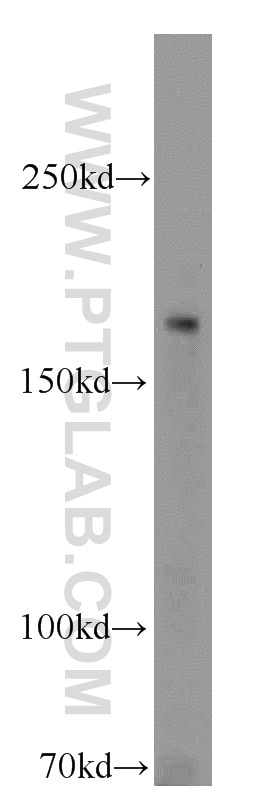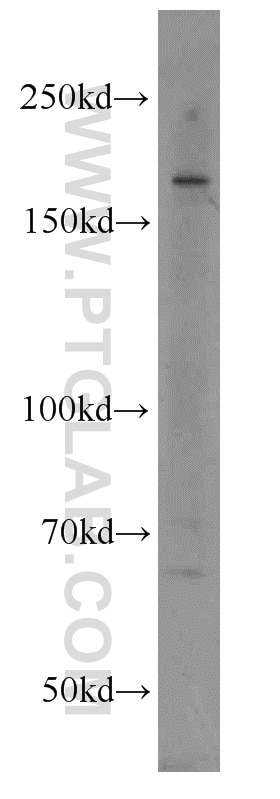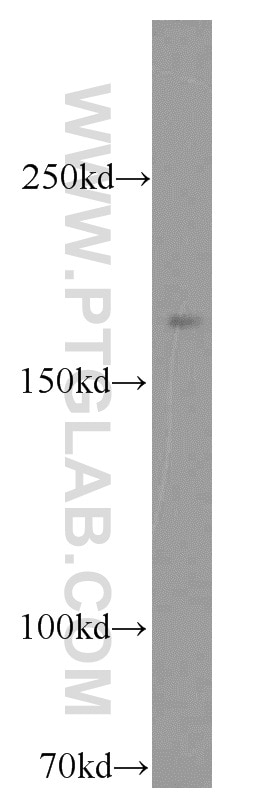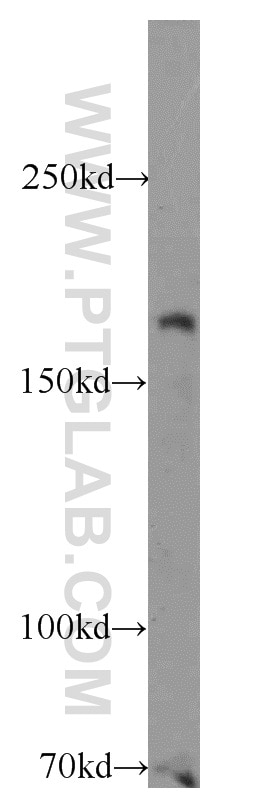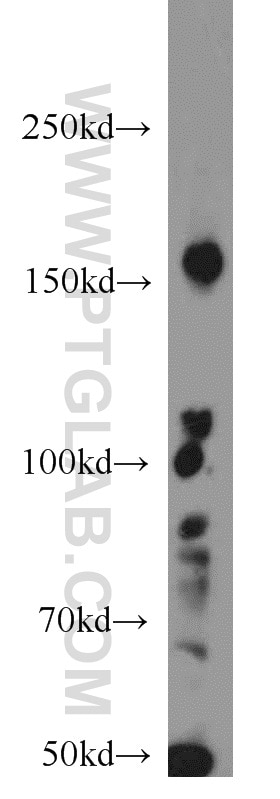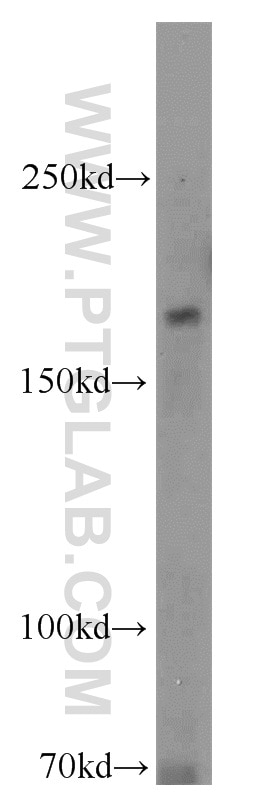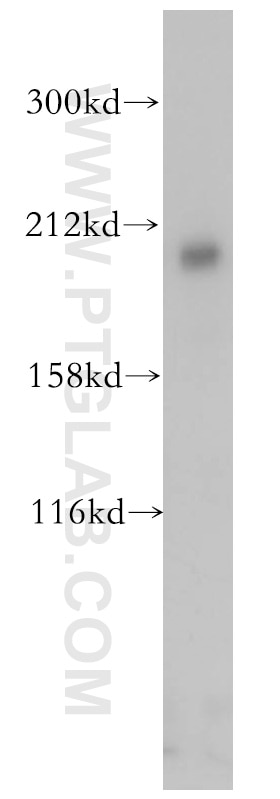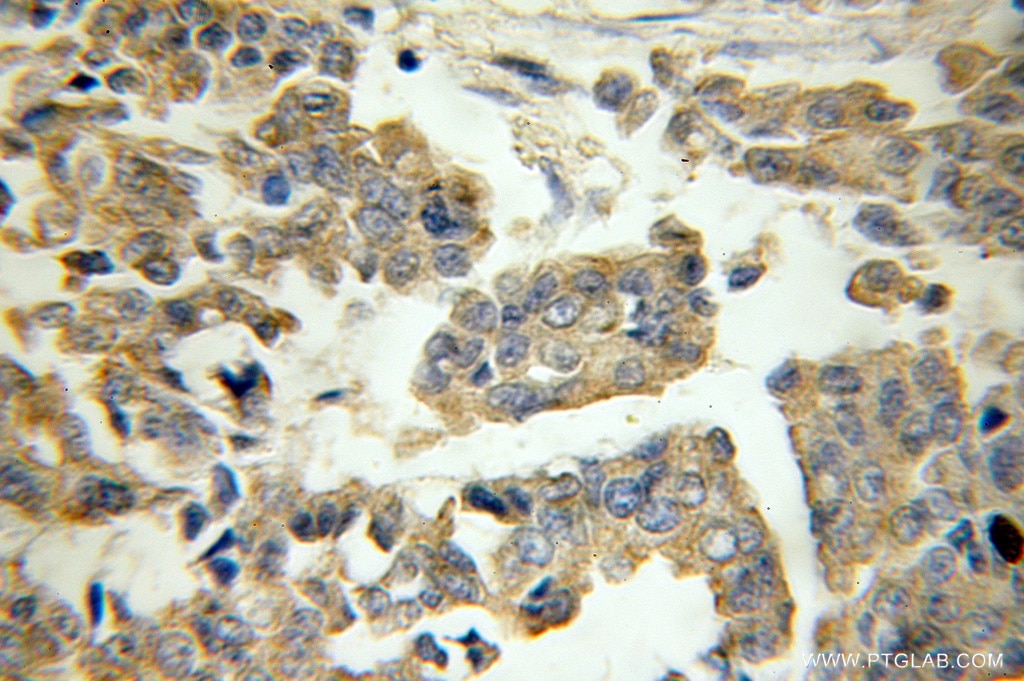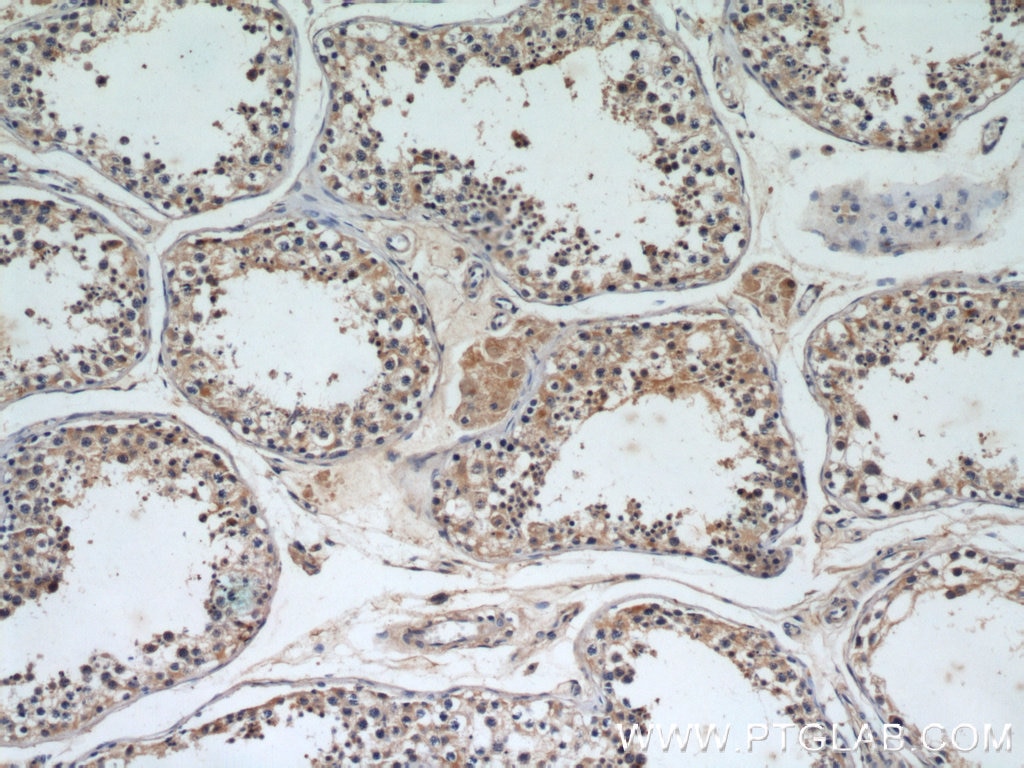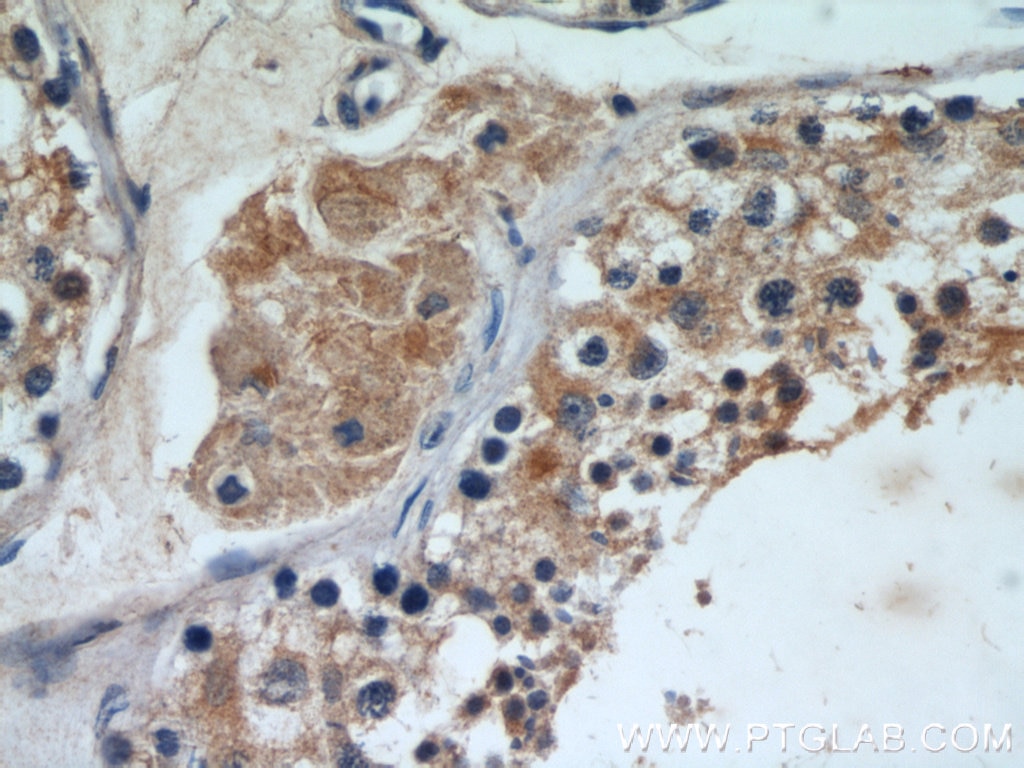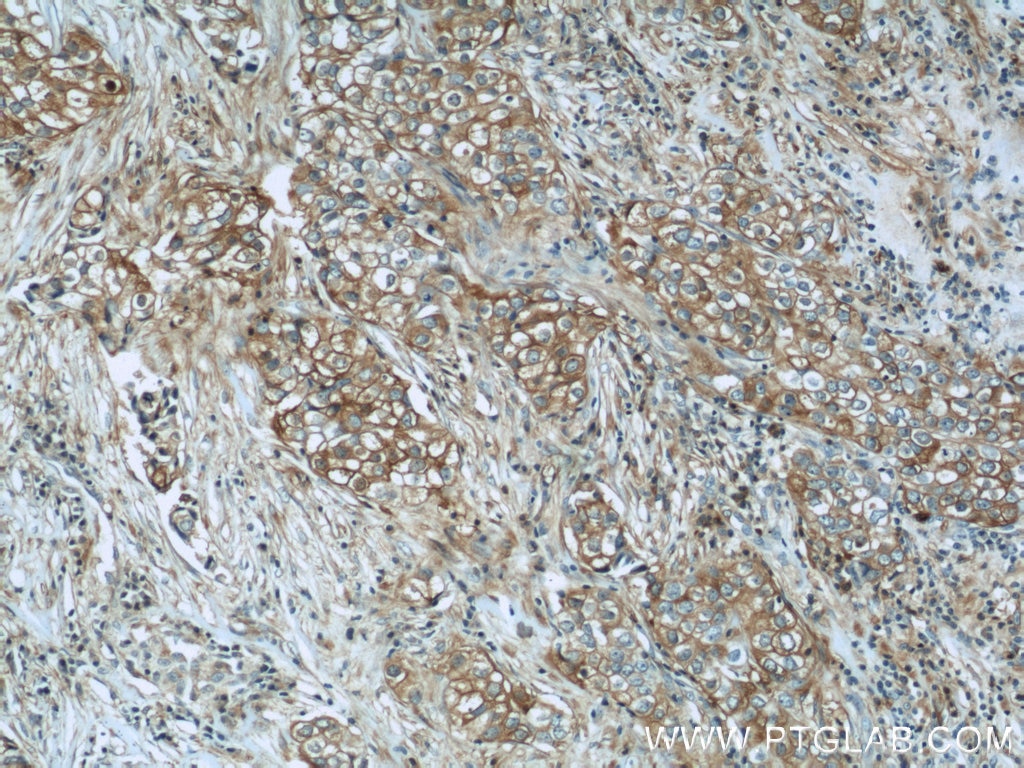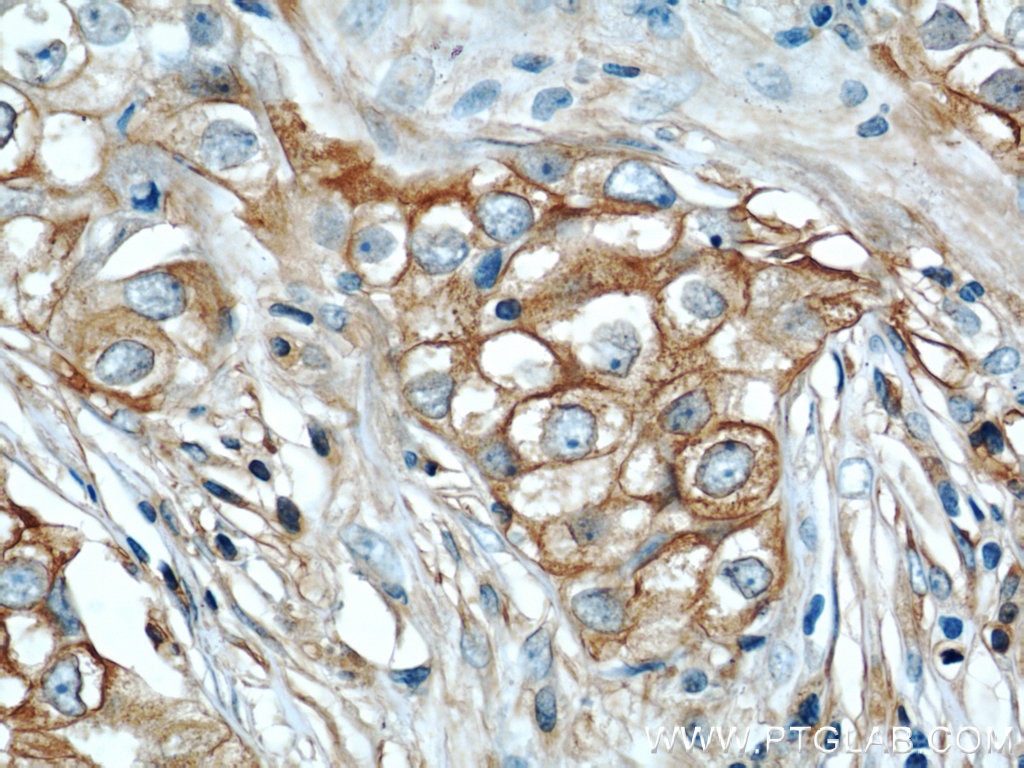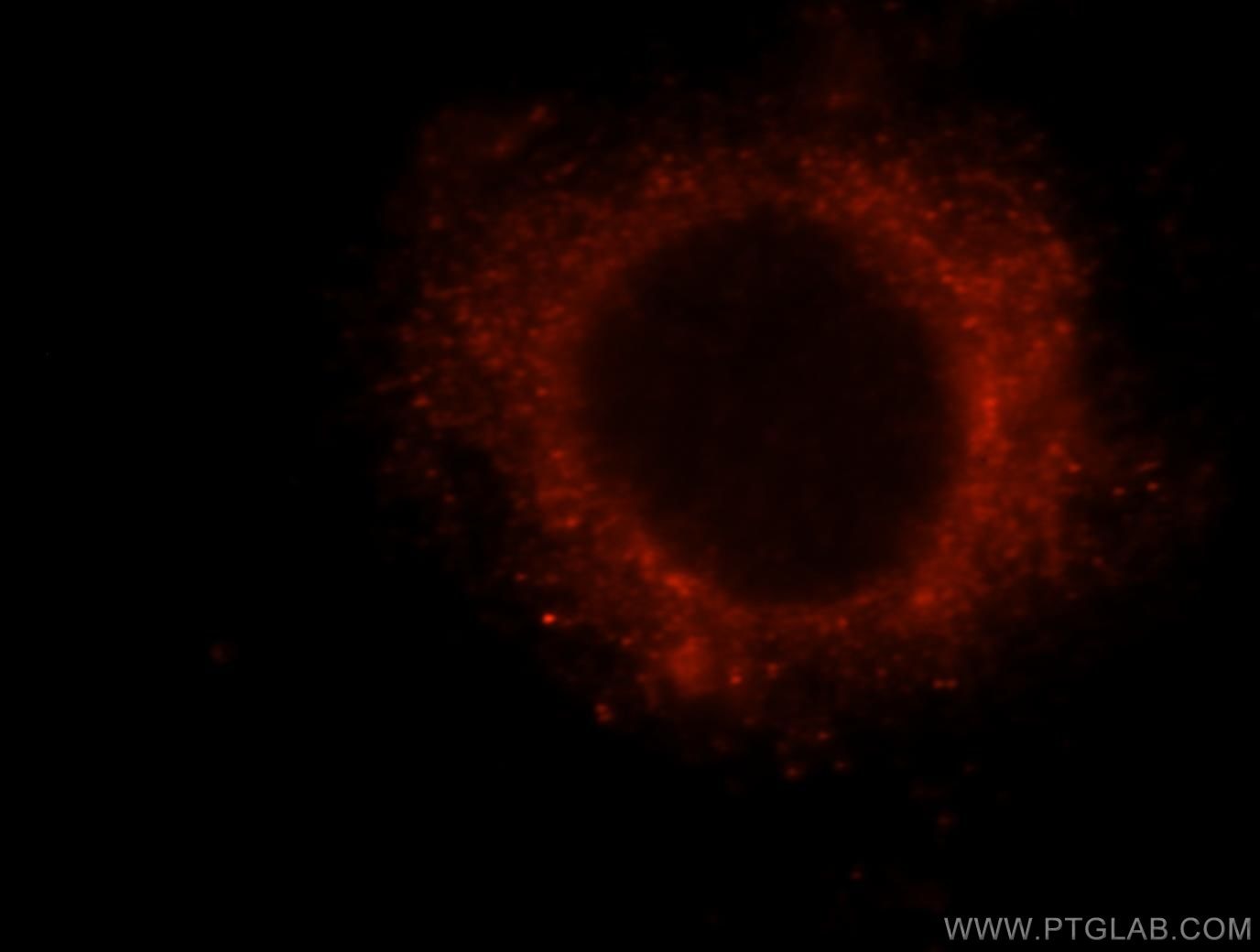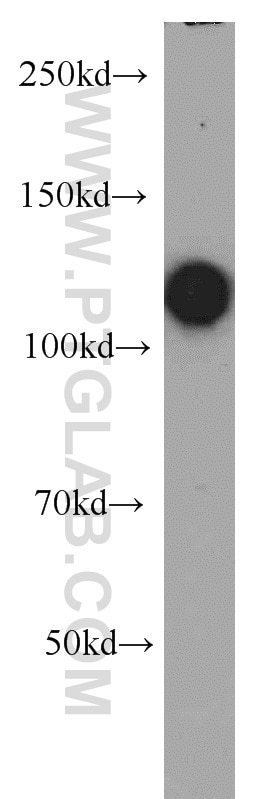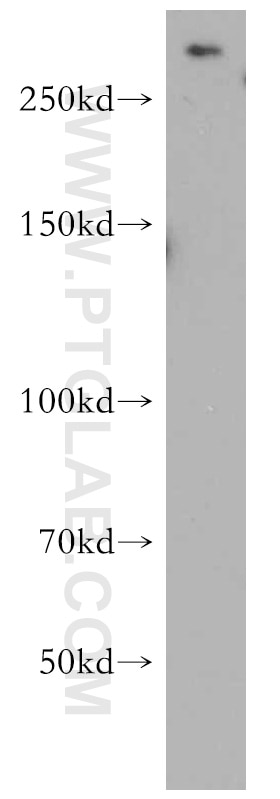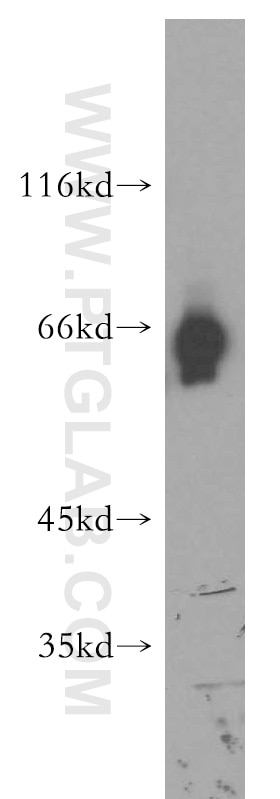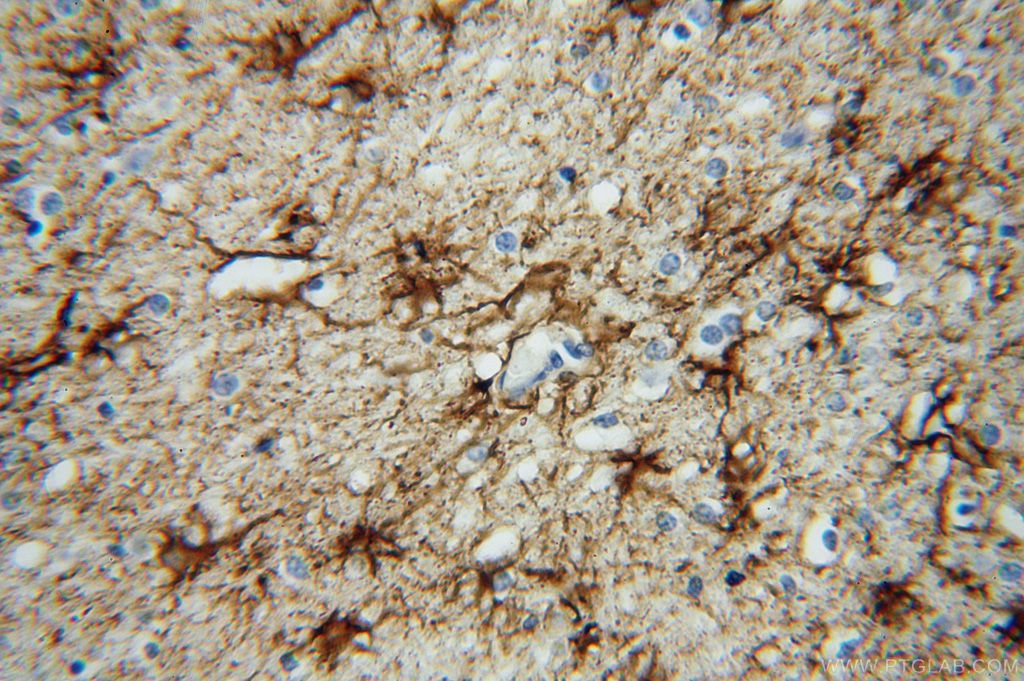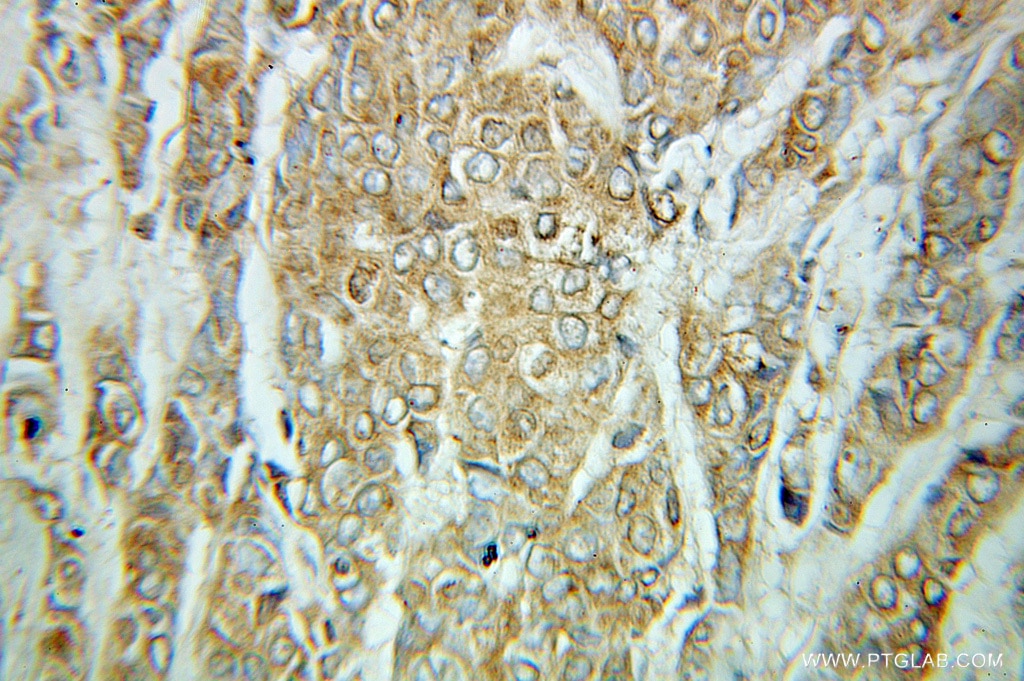- Featured Product
- KD/KO Validated
RB1CC1 Polyklonaler Antikörper
RB1CC1 Polyklonal Antikörper für WB, IHC, IF/ICC, ELISA
Wirt / Isotyp
Kaninchen / IgG
Getestete Reaktivität
human, Maus, Ratte
Anwendung
WB, IHC, IF/ICC, IP, ELISA
Konjugation
Unkonjugiert
Kat-Nr. : 10043-2-AP
Synonyme
Galerie der Validierungsdaten
Geprüfte Anwendungen
| Erfolgreiche Detektion in WB | HeLa-Zellen, Jurkat-Zellen, Maushirngewebe, MCF-7-Zellen |
| Erfolgreiche Detektion in IHC | humanes Mammakarzinomgewebe, humanes Hodengewebe Hinweis: Antigendemaskierung mit TE-Puffer pH 9,0 empfohlen. (*) Wahlweise kann die Antigendemaskierung auch mit Citratpuffer pH 6,0 erfolgen. |
| Erfolgreiche Detektion in IF/ICC | HeLa-Zellen |
Empfohlene Verdünnung
| Anwendung | Verdünnung |
|---|---|
| Western Blot (WB) | WB : 1:500-1:2000 |
| Immunhistochemie (IHC) | IHC : 1:20-1:200 |
| Immunfluoreszenz (IF)/ICC | IF/ICC : 1:10-1:100 |
| It is recommended that this reagent should be titrated in each testing system to obtain optimal results. | |
| Sample-dependent, check data in validation data gallery | |
Veröffentlichte Anwendungen
| KD/KO | See 9 publications below |
| WB | See 17 publications below |
| IHC | See 3 publications below |
| IF | See 7 publications below |
| IP | See 1 publications below |
Produktinformation
10043-2-AP bindet in WB, IHC, IF/ICC, IP, ELISA RB1CC1 und zeigt Reaktivität mit human, Maus, Ratten
| Getestete Reaktivität | human, Maus, Ratte |
| In Publikationen genannte Reaktivität | human, Maus, Ratte |
| Wirt / Isotyp | Kaninchen / IgG |
| Klonalität | Polyklonal |
| Typ | Antikörper |
| Immunogen | Rekombinantes Protein |
| Vollständiger Name | RB1-inducible coiled-coil 1 |
| Berechnetes Molekulargewicht | 1594 aa, 183 kDa |
| Beobachtetes Molekulargewicht | 180-200 kDa |
| GenBank-Zugangsnummer | BC017556 |
| Gene symbol | RB1CC1 |
| Gene ID (NCBI) | 9821 |
| Konjugation | Unkonjugiert |
| Form | Liquid |
| Reinigungsmethode | Antigen-Affinitätsreinigung |
| Lagerungspuffer | PBS mit 0.02% Natriumazid und 50% Glycerin pH 7.3. |
| Lagerungsbedingungen | Bei -20°C lagern. Nach dem Versand ein Jahr lang stabil Aliquotieren ist bei -20oC Lagerung nicht notwendig. 20ul Größen enthalten 0,1% BSA. |
Hintergrundinformationen
RB1CC1, also named as RBICC, is implicated in the regulation of RB1 expression and functions as a DNA-binding transcription factor. It is a potent regulator of the RB1 pathway and a mediator that plays a crucial role in muscular differentiation[PMID:15968549 ]. Its expression is, thus, a prerequisite for myogenic differentiation. Involved in autophagy. RB1CC1 is required for autophagosome formation [PMID: 19258318]. It is probably involved in the tumorigenesis of breast cancer[PMID: 14533007]. RB1CC1 is frequently mutated in breast cancer and shows characteristics of a classical tumor suppressor gene[PMID: 21602932]. The immunogen of this antibody is C-terminal 154aa of RB1CC1.
Protokolle
| Produktspezifische Protokolle | |
|---|---|
| WB protocol for RB1CC1 antibody 10043-2-AP | Protokoll herunterladen |
| IHC protocol for RB1CC1 antibody 10043-2-AP | Protokoll herunterladen |
| IF protocol for RB1CC1 antibody 10043-2-AP | Protokoll herunterladen |
| Standard-Protokolle | |
|---|---|
| Klicken Sie hier, um unsere Standardprotokolle anzuzeigen |
Publikationen
| Species | Application | Title |
|---|---|---|
Nat Immunol Guanylate-binding proteins convert cytosolic bacteria into caspase-4 signaling platforms.
| ||
Nat Cell Biol mTOR inhibits autophagy by controlling ULK1 ubiquitylation, self-association and function through AMBRA1 and TRAF6. | ||
Nat Struct Mol Biol Interaction between FIP200 and ATG16L1 distinguishes ULK1 complex-dependent and -independent autophagy. |
